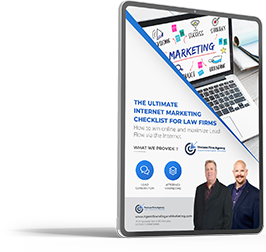
These days, if you want to reach more clients, you must be active on social media. A good social media marketing strategy can result in better search rankings for your website, more prospects, and increased conversion rates. But, with an ever expanding social sphere, it can be difficult to know where to focus your marketing efforts.
The prospects for business generation are good, with 66 percent of marketers gaining enhanced lead generation benefits on social media, according to Buffer. The dilemma, however, is choosing the most appropriate social media channels.
Facebook, Twitter, Google+, Youtube, Instagram… the list goes on. How much time and resources do you have to spend on creating content, tweeting, posting, and interacting with clients? More importantly, where do the people in your target audience hang out?
Before choosing which social media channels to include in your marketing strategy, you must weigh a few factors.
Target Buyer Determines Target Channel
One of the biggest factors in determining which social media channels to use is your audience. Simply put, do the people in your target demographic use the social platform in question. It may be new and trending, but if the users don’t fit your marketing persona, your efforts might be futile.
Snapchat, for example, is considered to be a social platform of growing importance to young millennials – people between the ages of 13 – 34. If your customer segment is largely composed of 60-year-old men, marketing on Snapchat could be deemed a wasted effort.
The most effective social marketing strategies are informed by demographics. You must use data-driven insights to help you decide which channels will be most fruitful. There are tools to help you gather the necessary data.
If you have yet to begin executing a social media marketing strategy, the Pew Research Centre has provided some insights into the key demographics on several major social media platforms. To tighten up your current social strategy and figure out which channels are worth maintaining, you can use a tool like Sprout Social. This tool will help you to analyze your current audience through data about their age, gender, and location.
What Are Your Social Media Marketing Objectives?
You must align your social marketing with your agency’s high-level objectives. That means ensuring that each channel you use will help you achieve your main business goals. So, for example, if your primary goal is brand awareness, you might focus on social platforms that have high user numbers. If your aim is to enhance lead generation, however, user numbers will not be as important as engagement levels.
Well-established platforms such as Facebook have high user numbers and the potential for greater brand exposure. As of writing, Statista states that Facebook has 1.86 billion users. That number is increasing daily. You can use paid promotion methods in your Facebook marketing to increase distribution of your content and ensure that more people become aware of your agency on this highly popular platform.
LinkedIn, on the other hand, has significantly fewer users, with just 467 million. But this platform is renowned for being the king of social media lead generation. If the goal of lead generation is a higher priority than brand exposure for your agency, LinkedIn marketing should most likely take precedence over Facebook.
Where Does Your Competition Go?
Analyzing your competitor’s social media marketing tactics can provide a baseline for your own activities. By looking at the competition, you can get a good idea about which channels are most suited to your industry, the type of content to post, and the engagement levels of the audience.
If you are just starting out with social marketing, or even if you have been at it a while and just need a fresh approach, insights about your competitors could light the way. Here, again, much of the heavy lifting can be done using various tools.
You can, for example, use a tool like Buzzsumo to monitor the performance of your competitor’s’ content. With Buzzsumo, you can see what type of content attracts the most engagement, which platforms yield the most success for competitors, and how their content performs across multiple social media channels. This important data can be used to inspire your social marketing strategy.
{{cta(‘7267e964-fe68-49b5-b154-749a7cb89f30′,’justifycenter’)}}
How Much Time and Resources Do You Have?
Picking just one social media channel is unlikely to suffice. According to Adweek, 91% of retail brands use two or more channels. There may be several reasons for that, but one of the more obvious ones is reach; the more brand exposure you have across multiple social media channels, the greater your marketing reach.
But, striking the perfect balance can be tricky. If you target too many platforms, you may spread your resources too thin and dilute your marketing potential. Too few platforms, and you may miss out on important opportunities to increase clientele.
The key is to start small. Don’t overstretch your resources. By starting small, you can discover two or three stalwart social media platforms before adding additional channels as you increase resources. You can use social media scheduling tools such as Hootsuite and Buffer to bolster your resources. These tools allow you to automate content posting across multiple channels and gather valuable data about your audience.
Conclusion
The benefits of social media on businesses are demonstrable and profound. What’s more, there are numerous channels available, all offering different advantages. It can be tempting, from a brand-building point of view, to try and gain a presence on all social platforms. Not only would that prove difficult, but it might also hurt your brand.
The wiser approach is to determine the social media channels that are likely to yield the greatest results. That means finding out where your target audience is, making sure you have enough resources to undertake a sustained marketing effort, and paying attention to what your successful competitors are doing.





